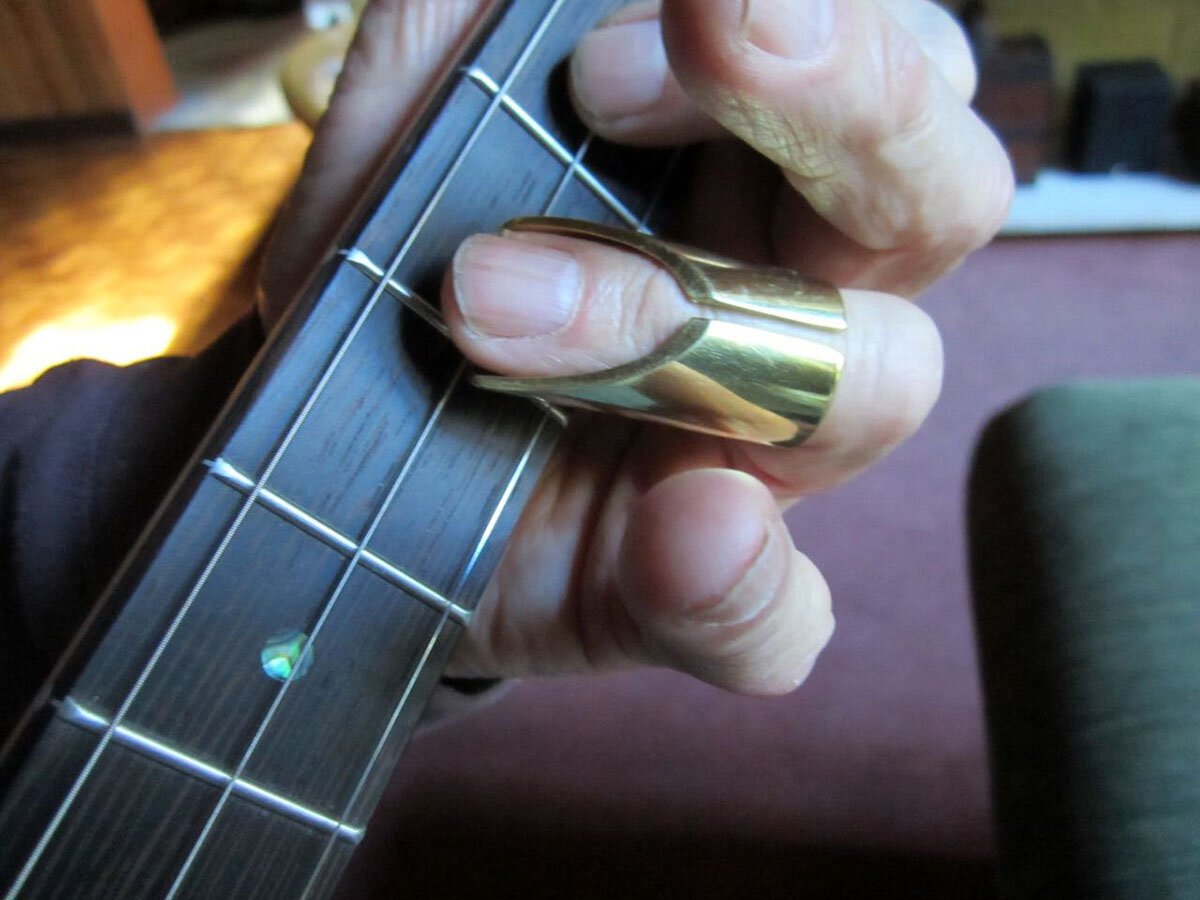Technical Information
Cigar Box Guitar Neck Shaping
Begin by finish sanding head and heel.
Hold neck in vise ready for shaping. Support neck with a stick in tuner hole to the floor. Note pencil line down centre.
Using a spokeshave, carve away the neck until desired shape is achieved. Leave pencil line on. Note tearout. Try shaving from opposite direction. Use whichever direction feels best.
Adjust spokeshave to fine cut and shave until near perfect.
Using a coarse rasp, shape both ends of neck to desired shape. Repeat same with a fine rasp until satisfied. Go over rest of neck to smooth out spokeshave marks.
Stewmac have fantastic coarse and fine Dragon hand-struck rasps which work like magic and give an almost perfect result, even before sanding. I use the double radius coarse and the double radius fine. Not cheap, but makes shaping easy.
Sand with 60 grit paper, then 80 grit, then 120 grit, and then 240 grit until silky smooth.
Find Fret Positions in thirty seconds without a computer or calculations that drive you crazy
I know that good people like Stewmac have them online, but my formula allows you to have, at your fingertips, the ability to find fret positions for any scale length for any instrument, be it a uke or a giant Mexican guitar, instantly. All you will need is a simple, cheap calculator. A friend of mine gave me this formula a few years ago but it wasn’t exactly accurate. So I tinkered with it for a couple of hours until it was as perfect as possible.
Just to prove that it works perfectly lets use 600mm as the scale length (nut to bridge). The scale length can be as long or short as you care to make it. By using 600mm it will be easy to see that at the 12th fret the distance should be half of the scale length (300mm), and at the 24th fret a quarter (150mm) thus proving the formula.
Let’s enter 0.943878 x 600
Now press = once
We get 566.3268
This is the distance from the bridge to the 1st fret.
Press = once again and we get 534.5434
This is the distance from the bridge to the 2nd fret.
Press = once again for the 3rd fret and so on.
When you get to the 12th fret it should read 300.01402 (octave).
Keep going to the second octave (24th fret) and we get 150.01399 thus proving that the formula is accurate for our purposes. Only use 2 digits after the decimal point, ignore the rest that follow as they are too small to be relevant.
Now here’s an interesting thing I discovered quite by chance. I wanted to turn metal slugs on the lathe to the sizes of the spaces between the frets so that I could line them all up in a slot cut in a piece of flat board, and clamped to my pull-saw. Then cut each fret taking away one slug at a time until I had a perfectly cut fingerboard. The way to find these sizes leapt off the page at me – EUREKA!
Put in our formula again as before 0.943878 x 600.
Now press = 10 times and we get 336.75
Move the decimal point one place to the left and we get 33.67
This is the distance from the nut to the 1st fret.
Press = once and we get 317.85
Move decimal point again (once to the left) and we get 31.78 which is the distance between 1st and 2nd frets.
Keep pressing = until all distances between frets are found.
You can use wooden dowel for the distance pieces. All you will need is a drop-saw, lots of dowel and lots of patience. It helps to use a digital vernier.
I hope this is of use to you. Have fun!
John Stax
P.S. Write down the formula in a few places that you can locate when needed!!














